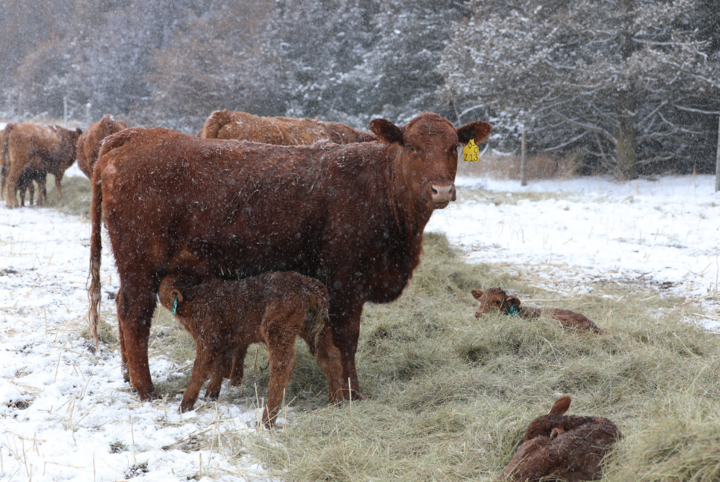Vitamin A is one of the most important keys to a healthy immune system in newborn calves. Colostrum is the only way calves can get the vitamin A they need to fight off bacteria that will make them sick, said Mary Drewnoski, University of Nebraska—Lincoln beef systems specialist and associate professor. But not all colostrum contains enough vitamin A, and recent research suggests that “enough” is more than previously thought.
Calves need vitamin A for healthy eyes, skin, respiratory systems and digestive tracts. “Calves are born deficient in vitamin A and depend on colostrum from the mom to provide what they need,” Drewnoski said. Calves that don’t get enough vitamin A from colostrum are prone to scours and respiratory disease.
The amount of vitamin A in colostrum depends on the cow’s diet in late pregnancy, and how much she has stored in her liver. However, the liver stores aren’t sufficient to fortify the colostrum, so vitamin A must also come from her diet. Hay, dormant forage and grain are low in vitamin A, so the only option to ensure sufficient vitamin A for pregnant cows is through supplementing.
Drewnoski said research at UNL recently showed that a cow needs more vitamin A in her diet than previously recommended to provide enough to her newborn calf. “We now suggest 75,000 International Units per day (IU/d). That means in a mineral mix assuming 4 ounces per head per day producers need to look for a supplement with about 300,000 IU per pound.” The previous recommendation was 30,000 to 50,000 IU/d.
The cow’s milk is usually low in vitamin A and supplementing during lactation doesn’t meet the calf’s need, which stresses the importance of making sure the calf gets adequate colostrum.
Colostrum replacers and milk replacers do contain vitamin A and can help when colostrum isn’t available. There are also injectable vitamin A options, and Drewnoski said those can be used to “top up” a cow or calf that likely has low vitamin A levels, but they aren’t an effective primary source and aren’t necessary with a good nutrition program.
In addition to choosing the right mineral supplement, it’s important to make sure all cows have access to it and that it’s always available. Drewnoski recommends providing one mineral source per 30 head of cattle. She said it’s also important the mineral doesn’t run out because the most aggressive cows will hog it when it’s available again. If mineral does out, she suggests providing loose salt for a day to satisfy their craving before putting out the mineral mix again.

